Blog

Comet Nishimura is growing. More precisely, the tails C/2023 P1 (Nishimura) are growing as it nears the Sun. Discovered only last month, the comet is already near naked eye brightness as it now moves inside the Earth’s orbit. The comet will be nearest the Earth next week, but nearest the Sun the week after — on September 17. Speculation holds that expelled ice and dust from Comet Nishimura‘s last visit to the inner Solar System may have created the Sigma Hydrids meteor shower which peaks yearly in December. If so, then this meteor shower may become more active, refreshed with new comet debris. Pictured, Comet Nishimura was captured from Edgewood, New Mexico, USAfour nights ago, showing a long ion tail structured by interactions with the Sun’s wind. Look for this comet near your eastern horizon just before sunrise for the next few mornings, but very near your western horizon just after sunset next week — as its coma continues to brighten and its tails continue to grow.
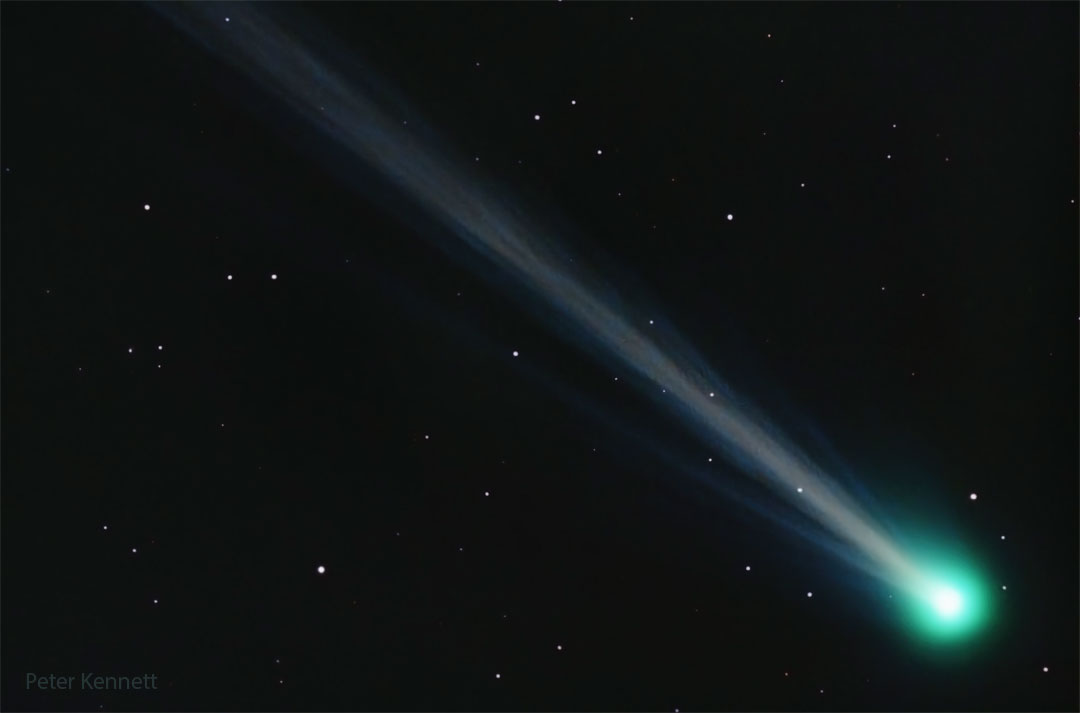
Billy Bang (September 20, 1947 – April 11, 2011), born William Vincent Walker, was an American free jazzviolinist and compose.
Bang’s family moved to New York City’s Bronx neighborhood while he was still an infant, and as a child he attended a special school for musicians in nearby Harlem. At that school, students were assigned instruments based on their physical size. Bang was fairly small, so he received a violin instead of either of his first choices, the saxophone or the drums. It was around this time that he acquired the nickname of “Billy Bang”, derived from a popular cartoon character.
Bang studied the violin until he earned a hardship scholarship to the Stockbridge School in Stockbridge, Massachusetts.
Bang died on April 11, 2011. According to an associate, Bang had had lung cancer. He had been scheduled to perform on the opening day of the Xerox Rochester International Jazz Festival on June 10, 2011. He is buried at Woodlawn Cemetery, Bronx, New York.
more...Eric Gale (September 20, 1938 – May 25, 1994) was an American jazz and R&B guitarist.
Born in Bedford–Stuyvesant, Brooklyn, New York, Gale grew up in a diverse household. His paternal grandfather was from Yorkshire, England. He had extended family in Barbados and Venezuela. Gale often visited the U.K. and Venezuela as an adolescent, which influenced his style into adulthood. He was fluent in Spanish.
Gale started playing the guitar at age 12. At that time, he skipped junior high school. Soon after, in high school, he visited John Coltrane‘s home after school and sat in on jam sessions, which inspired Gale’s readily recognizable style. Gale received his Master of Science in chemistry at Niagara University. He was also on the football team. Later, Gale was pursued by Frank Sinatra to work on the hit song “My Way”, as mentioned in Frank Sinatra’s autobiography. Gale decided to pursue a musical career full-time instead of getting his Ph.D. in Chemistry. Gale died of lung cancer in 1994 at the age of 55 and is survived by his wife Masako Murakami-Gale, their three daughters, and two grandchildren.
more...Elvira Louise Redd (September 20, 1928 – February 6, 2022) was an American jazz alto saxophone player, vocalist and educator. She was active from the early 1950s and was known primarily for playing in the bluesstyle. She was highly regarded as an accomplished veteran, and performed with Count Basie, Rahsaan Roland Kirk, Linda Hopkins, Marian McPartland and Dizzy Gillespie.
Elvira Louise Redd was born on September 28, 1928 in Los Angeles, California, the daughter of New Orleans jazz drummer and Clef Club co-founder Alton Redd and Mattie Redd (née Thomas). Her mother played saxophone, although not professionally, and her brother was a percussionist. She was deeply influenced during her formative years by her father, who was one of the leading figures on the Central Avenue jazz scene. Another important musical mentor was her paternal great aunt Alma Hightower, who convinced the 10-year-old Redd to switch from piano to saxophone. During junior high school, Redd played alto saxophone in a band with Melba Liston and Dexter Gordon.
more...Foreststorn “Chico” Hamilton (September 20, 1921 – November 25, 2013) was an American jazz drummer and bandleader. He came to prominence as sideman for Lester Young, Gerry Mulligan, Count Basie, and Lena Horne. Hamilton became a bandleader, first with a quintet featuring the cello as a lead instrument, an unusual choice for a jazz band in the 1950s, and subsequently leading bands that performed cool jazz, post bop, and jazz fusion.
Foreststorn Hamilton was born in Los Angeles, California, one of three brothers, one of whom was actor Bernie Hamilton.
more...Do stars always create jets as they form? No one is sure. As a gas cloud gravitationally contracts, it forms a disk that can spin too fast to continue contracting into a protostar. Theorists hypothesize that this spin can be reduced by expelling jets. This speculation coincides with known Herbig-Haro (HH) objects, young stellar objects seen to emit jets — sometimes in spectacular fashion. Pictured is Herbig-Haro 211, a young star in formation recently imaged by the Webb Space Telescope (JWST) in infrared light and in great detail. Along with the two narrow beams of particles, red shock waves can be seen as the outflows impact existing interstellar gas. The jets of HH 221 will likely change shape as they brighten and fade over the next 100,000 years, as research into the details of star formation continues.
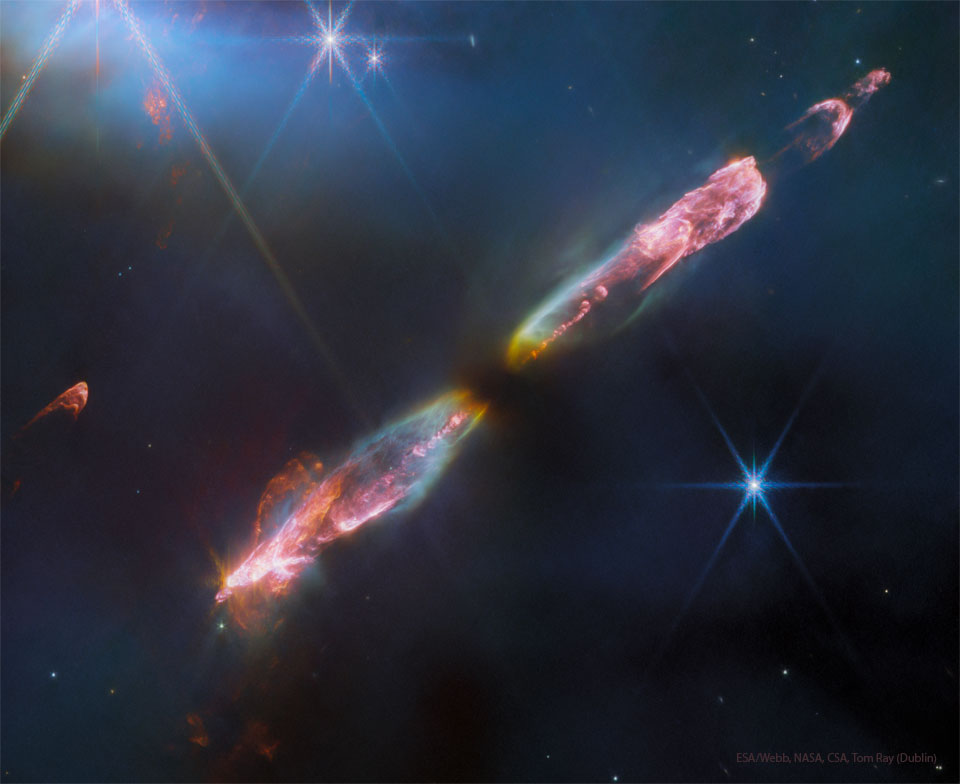
Ellen Naomi Cohen (September 19, 1941 – July 29, 1974), known professionally as Mama Cass and later on as Cass Elliot, was an American singer and voice actress. She was a member of the singing group the Mamas & the Papas. After the group broke up, Elliot released five solo albums. In 1998, she was posthumously inducted into the Rock and Roll Hall of Fame for her work with the Mamas & the Papas.
Ellen Naomi Cohen was born in Baltimore, Maryland, on September 19, 1941, the daughter of Philip (died 1962) and Bess Cohen (née Levine; 1915–1994).
Elliot retired to an apartment in Mayfair at Curzon Place at which singer-songwriter Harry Nilsson allowed her to stay. Several hours after Elliot left Jack Martin’s cocktail party she died in her sleep at age 32. According to Keith Simpson, who conducted her autopsy, she died of a heart attack, and there were no drugs in her system. Elliot died in Flat 12, 9 Curzon Place (later Curzon Square), Shepherd Market, Mayfair, London, owned by Harry Nilsson. Four years later, The Who‘s drummer Keith Moon died in the same bedroom, also aged 32 years.
more...Henry Kaiser (born September 19, 1952) is an American guitarist and composer, known as an idiosyncratic soloist, a sideman, an ethnomusicologist, and a film score composer. Recording and performing prolifically in many styles of music, Kaiser is a fixture on the San Francisco Bay Area music scene. He is considered a member of the “second generation” of American free improvisers. He is married to Canadian artist Brandy Gale. He is the son of Henry J. Kaiser Jr. and the grandson of industrialist Henry J. Kaiser.
In 1977, Kaiser founded Metalanguage Records with Larry Ochs (Rova Saxophone Quartet) and Greg Goodman. In 1979 he recorded With Friends Like These with Fred Frith, a collaboration which continued over the next 20 years. In 1983 they recorded Who Needs Enemies, and in 1987 the compilation album With Enemies Like These, Who Needs Friends? They joined with fellow experimental musicians John French, and English folk-rocker Richard Thompson to form French Frith Kaiser Thompson for two eclectic albums, Live, Love, Larf & Loaf (1987) and Invisible Means (1990). In 1999 Frith and Kaiser released Friends & Enemies, a compilation of their two Metalanguage albums along with additional material from 1984 and 1999.
more...Muhal Richard Abrams (born Richard Lewis Abrams; September 19, 1930 – October 29, 2017) was an American educator, administrator, composer, arranger, clarinetist, cellist, and jazz pianist in the free jazzmedium. He recorded and toured the United States, Canada and Europe with his orchestra, sextet, quartet, duo and as a solo pianist. His musical affiliations constitute a “who’s who” of the jazz world, including Max Roach, Dexter Gordon, Eddie “Lockjaw” Davis, Art Farmer, Sonny Stitt, Anthony Braxton, and The Art Ensemble of Chicago.
Abrams’s mother, Edna, was born in Memphis. His father, Milton, was born in Alabama and moved with his parents to Chicago. Richard Lewis Abrams was born there, the second of nine children, on September 19, 1930. His father became a self-employed handyman; his mother was a housewife.
more...George Lowen Coxhill (19 September 1932 – 10 July 2012) known professionally as Lol Coxhill, was an English free improvising saxophonist. He played soprano and sopranino saxophone.
more...Renowned Native American flutist and vocalist, powwow performer, multi-award recipient, and Lifetime Achievement Awardee, Robert Tree Cody (Maricopa/Dakota), peacefully departed on September 14, 2023. He graced this world for 72 years.
Enormous in stature, standing at an impressive height of 2.07 meters (6.79 feet), the indomitable “Tree” was among the trailblazers who disseminated traditional Native American singing and flute melodies across the globe. Over the course of his illustrious career, he launched eleven full-length albums through Canyon Records. He also contributed his artistry to numerous compilations and collaborative endeavors, featuring fellow artists such as Will Clipman, R. Carlos Nakai, Tony Redhouse, Hovia Edwards, Ruben Romero, and Janice Marie Johnson from A Taste of Honey.
more...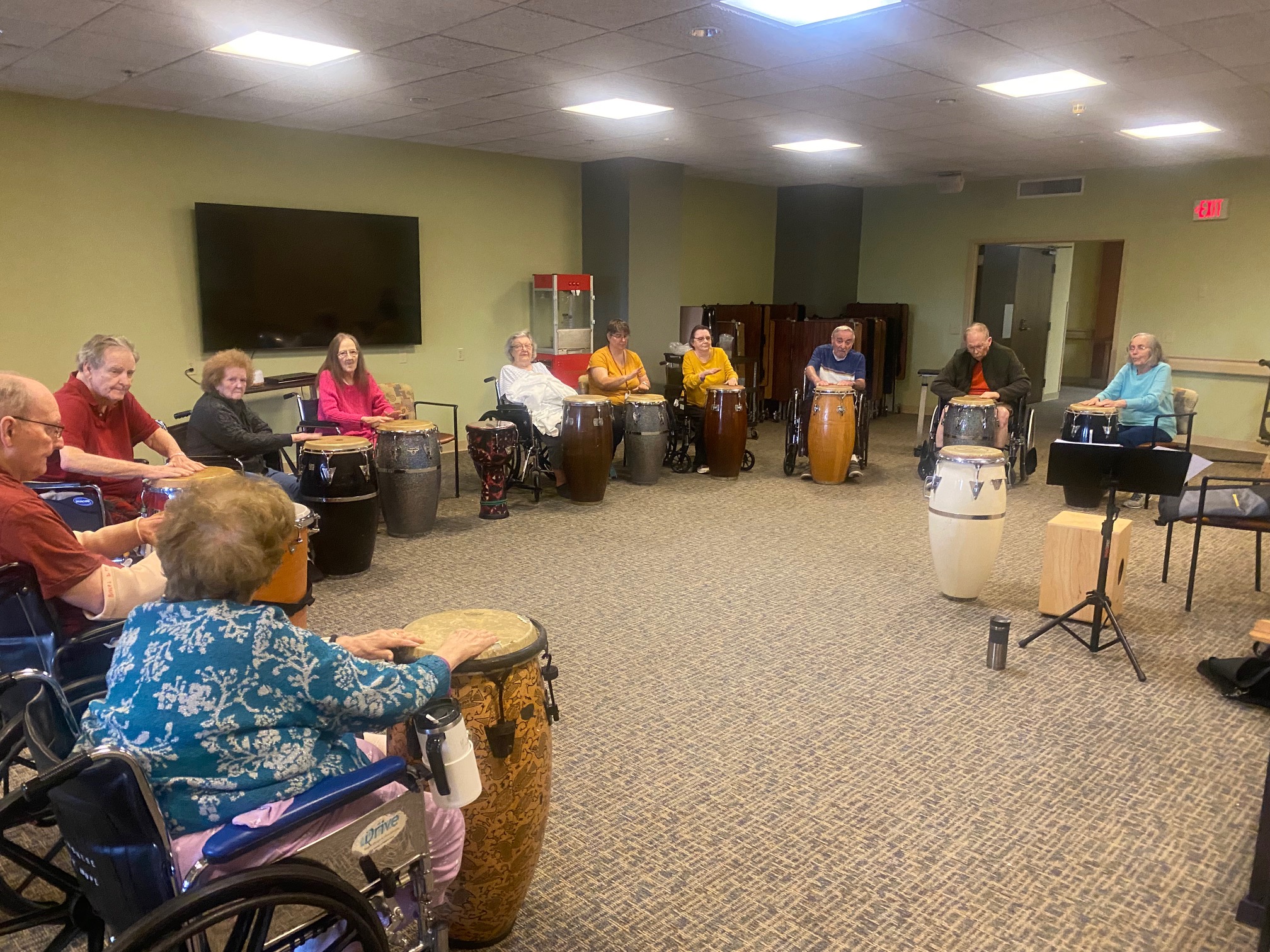

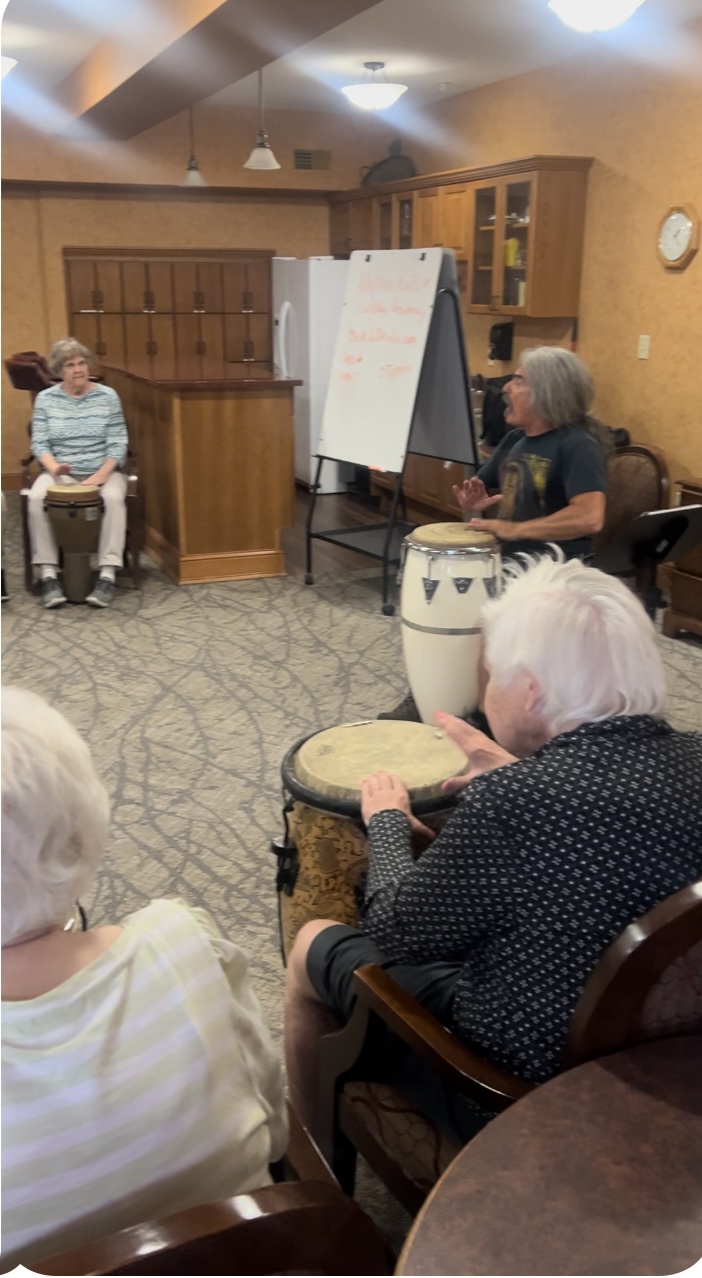
This Hubble Picture of the Week — taken using NASA/ESA Hubble Space Telescope’s Advanced Camera for Surveys (ACS) — shows Arp 107, a celestial object that comprises a pair of galaxies in the midst of a collision. The larger galaxy (in the left of this image) is an extremely energetic galaxy type known as a Seyfert galaxy, which house active galactic nuclei at their cores. Seyfert galaxies are notable because despite the immense brightness of the active core, radiation from the entire galaxy can be observed. This is evident in this image, where the spiraling whorls of the whole galaxy are readily visible. The smaller companion is connected to the larger by a tenuous-seeming ‘bridge’, composed of dust and gas. The colliding galactic duo lie about 465 million light-years from Earth. Arp 107 is part of a catalogue of 338 galaxies known as the Atlas of Peculiar Galaxies, which was compiled in 1966 by Halton Arp. It was observed by Hubble as part of an observing programme that specifically sought to fill in an observational ‘gap’, by taking limited observations of members of the Arp catalogue. Part of the intention of the observing programme was to provide the public with images of these spectacular and not-easily-defined galaxies, and as such, it has provided a rich source for Hubble Pictures of the Week. In fact, several recent releases, including this one and this one, have made use of observations from the same observing programme. [Image Description: A pair of merging galaxies. The galaxy on the left has a large, single spiral arm curving out from the core and around to below it, with very visible glowing dust and gas. The right galaxy has a bright core but only a bit of very faint material. A broad curtain of gas connects the two galaxies’ cores and hangs beneath them. A few small stars and galaxies are scattered around the black background.]
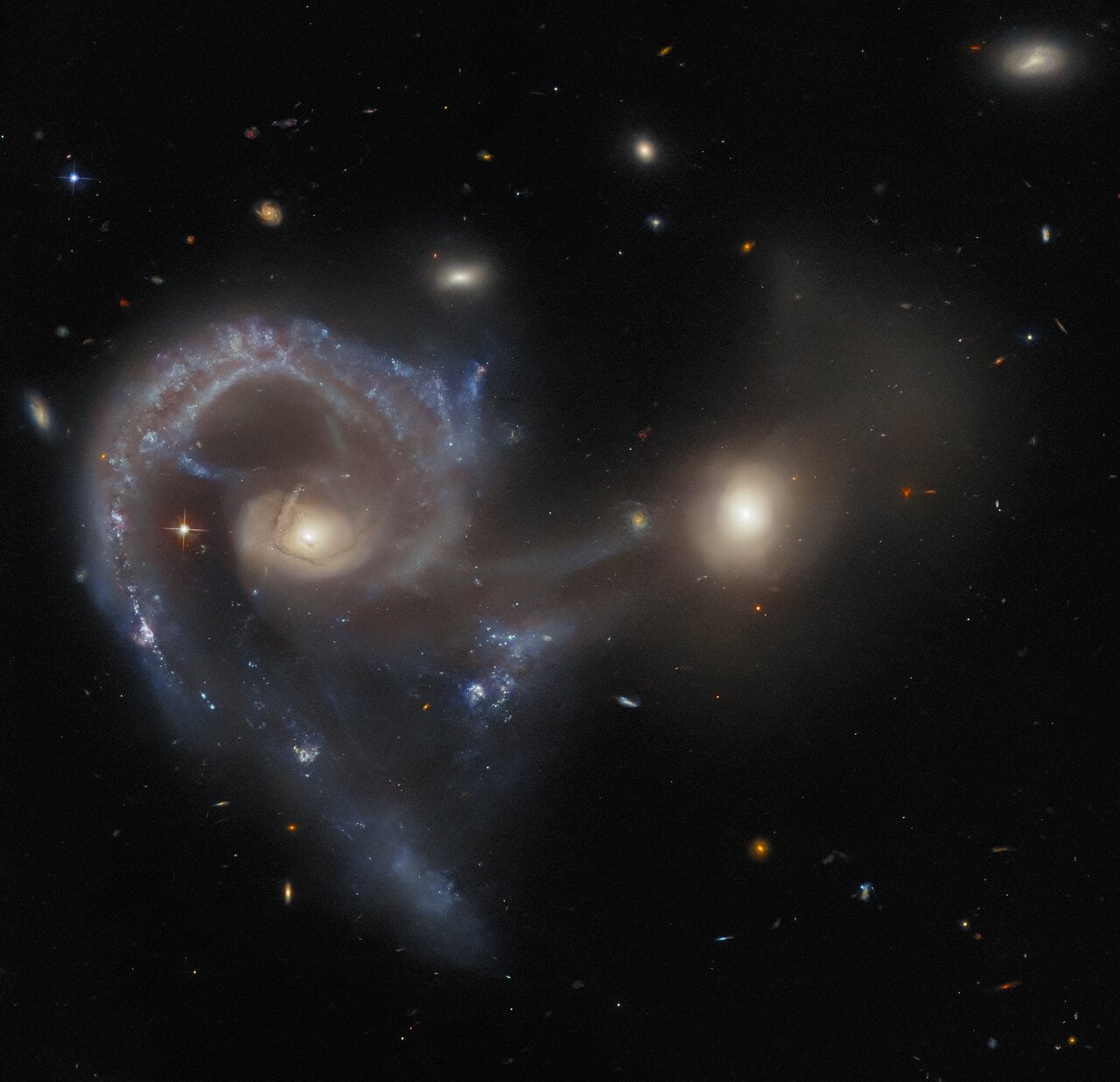
Philip Gary “Flip” Sloan (né Schlein; September 18, 1945 – November 15, 2015), known professionally as P. F. Sloan, was an American singer and songwriter. During the mid-1960s, he wrote, performed, and produced many Billboard Top 20 hits for artists such as Barry McGuire, the Searchers, Jan and Dean, Herman’s Hermits, Johnny Rivers, the Grass Roots, the Turtles, and the Mamas and the Papas.
Sloan’s signature song is “Eve of Destruction,” a 1965 U.S. number one for McGuire. Many of his songs were written in collaboration with Steve Barri. Their partnership yielded two US Top Ten hits—Herman’s Hermits’ “A Must to Avoid” (1965) and Johnny Rivers’ “Secret Agent Man” (1966)—and the Turtles‘ “You Baby” (1966).
Sloan was born in New York City, United States, to an American father and a Romanian-born mother. His family moved to West Hollywood, California in 1957, where his father, a pharmacist, changed the family name from “Schlein” to “Sloan” after repeatedly being denied a liquor license for his store.
more...Emily Remler (September 18, 1957 – May 4, 1990) was an American jazz guitarist, active from the late 1970s until her death in 1990.
Born in Englewood Cliffs, New Jersey, Remler began guitar at age ten. She listened to pop and rockguitarists like Jimi Hendrix and Johnny Winter. At the Berklee College of Music in the 1970s, she listened to jazz guitarists Charlie Christian, Wes Montgomery, Herb Ellis, Pat Martino, and Joe Pass.
Remler settled in New Orleans, where she played in blues and jazz clubs, working with bands such as Four Play and Little Queenie and the Percolators before beginning her recording career in 1981. She was praised by jazz guitarist Herb Ellis, who referred to her as “the new superstar of guitar” and introduced her at the Concord Jazz Festival in 1978. Remler bore the scars of her longstanding opioid use disorder,which is believed to have contributed to her death. In May, 1990, she died of heart failure at the age of 32 at the Connells Point home of musician Ed Gaston, while on tour in Australia.
more...More Posts
- The Cosmos with NGC 6726
- Junior Mance Day
- Ed Blackwell Day
- Thelonious Monk Day
- World Music with Orlando “Puntilla” Rios
- World Music with Orlando "Puntilla" Rios
- Daily Roots with Sly & The Revolutionaries
- Daily Roots with Sly & The Revolutionaries
- Rhythm Roots Workshop PRI St Louis Park 10-9-18
- The Cosmos with NGC 1672
- John Lennon Day
- Kenny Garrett Day
- Abdullah Ibrahim (Dollar Brand) Day
- Yusef Lateef Day
- World Music with Luca Brandoli Y Grupo Barracón
- Daily Roots with Dennis Brown
- Celebrate Indigenous Peoples Day 10-8-18
- The Cosmos with Comet 21P
- Pepper Adams Day
- Johnie Lewis Day